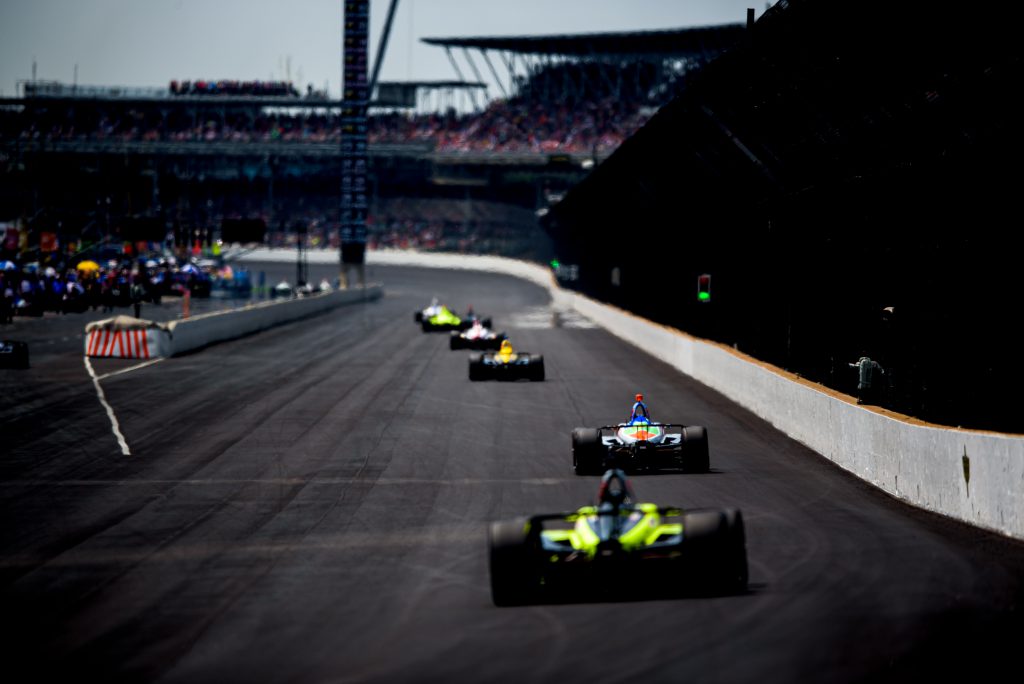On Wednesday, a wait of 442 days from the end of the 2019 Indianapolis 500 to the start of this year’s event will be over.
Alright, it’s only practice, but track time is even more vital in 2020, owing to the weather and the shake-up the new aeroscreen device is going to provide. You can read more on both below…
The event has been cut short this year and fans are not in attendance due to spiking coronavirus case numbers in the area. As a result, many of the popular fan-friendly events have gone. Loyal 500 supporters may dislike that, but it could be a breath of fresh air for the more distant fans wanting to see the focus placed purely on track action.
Whether you’ve watched every minute of IndyCar action this season and you’re an avid fan, or if you’ve stumbled across this as a complete Brickyard virgin, there’s something for you. Feel free to comment at the bottom of this page with any questions or opinions. And don’t worry Fernando Alonso fans – he’s covered here too…
The aeroscreen
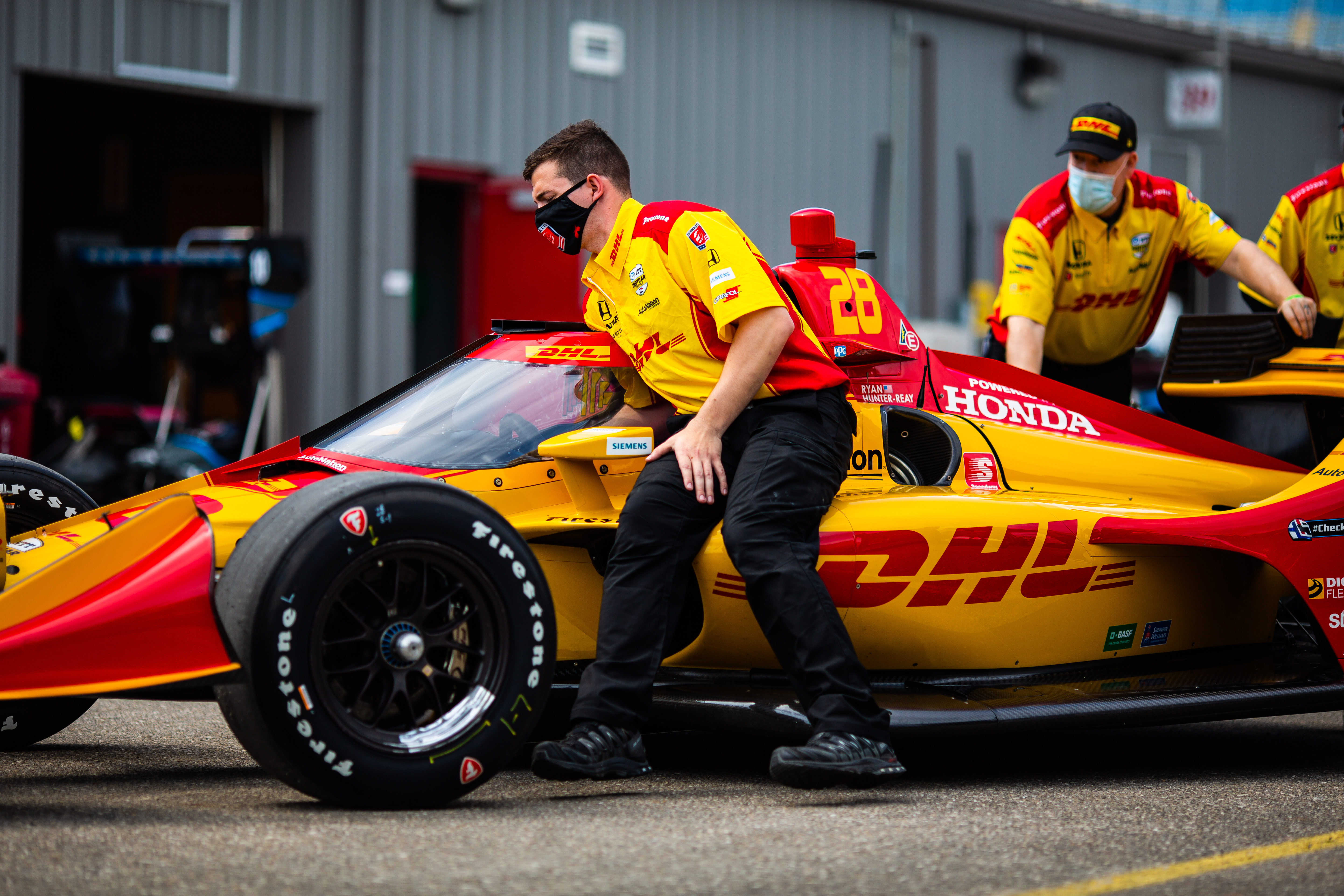
If you haven’t followed IndyCar closely this year, the aeroscreen has been a huge talking point.
Unlike Formula 1 – which introduced its halo device in 2018 – IndyCar took more time to choose, develop and test the Red Bull Advanced Technologies aeroscreen concept, which meant a 2020 introduction. It’s essentially a halo with a wrap around canopy.
We’ve already seen it save lives this season, which is obviously a welcome impact and the drivers will feel a hell of a lot safer knowing it’s there going into the fastest oval on the calendar.
But safety aside for a moment, it’s likely to have the biggest impact yet on the racing at Indy too.
The added weight at the front of the car has forced altered set-ups, changed tyre wear and the shape of the device has also disturbed airflow over the car, affecting the aerodynamics.
It’s not likely to make a big impact on a qualifying lap where the cars should be flat-out, if a little slower than previously because of the weight. Practice should give the teams time to maximise the car for that. But it could have a massive impact in the race.
The dirty air – so prevalent in F1 in recent years – is a factor at Indy too, forcing drivers to lift when following other cars in the race. With the added weight and change in aero, the drivers may have to lift even more. Especially if rear grip goes away quicker, which is what was reported by some drivers at Texas.
The dirty air factor is going to make practice vital for teams figuring out a set-up that lets them run close behind cars in traffic in order to get close enough to slingshot past following the exits of Turns 2 and 4.
Much like the start of the season, ultimately until we get 33 cars lapping on track it’s difficult to predict what will happen. But it’s certainly exciting for fans. And who knows, maybe one of the smaller teams will crack the aeroscreen code first and become an unlikely challenger. Here’s hoping.
Can Alonso finally obtain the crown?
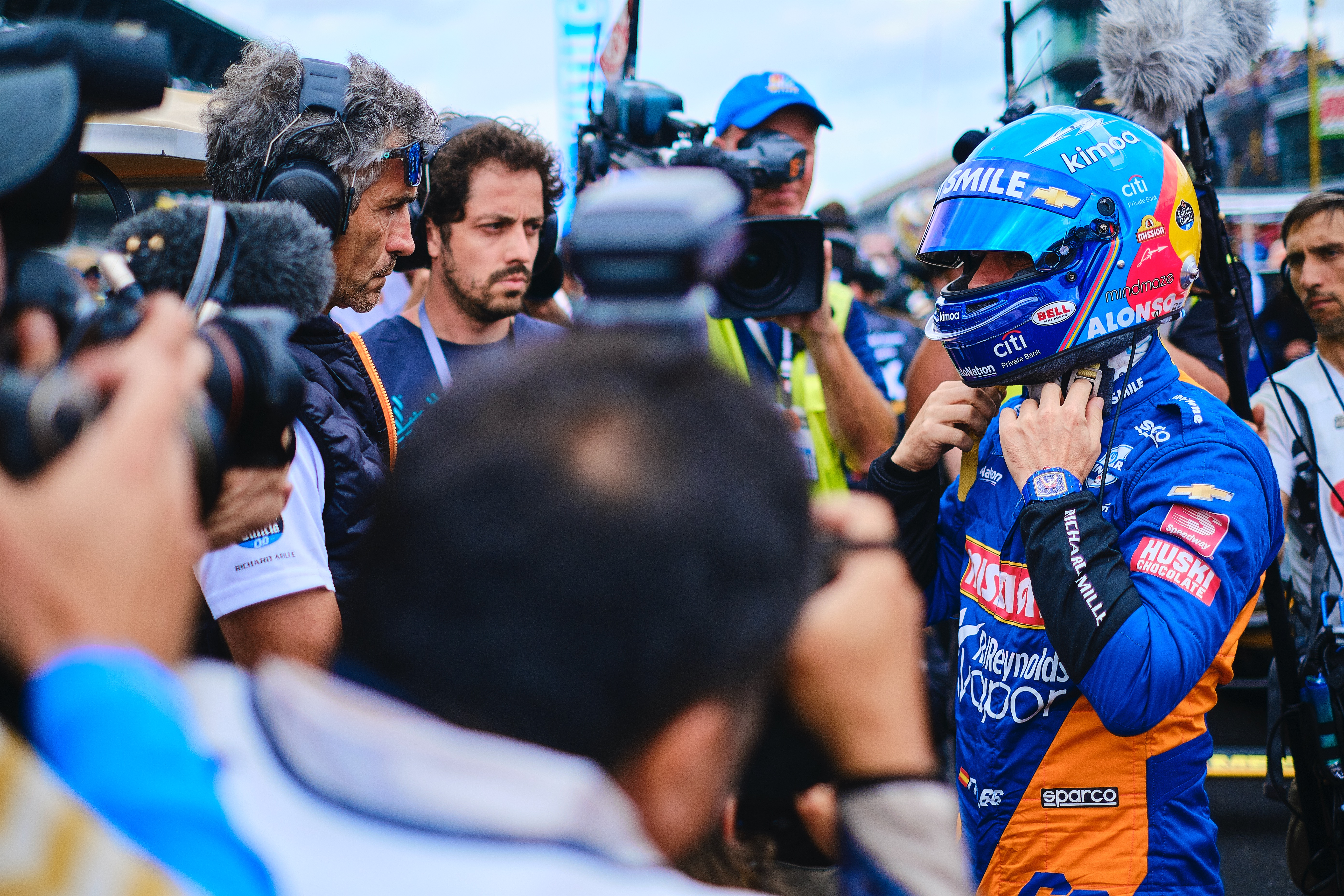
The Fernando Alonso media train is about to hit full steam ahead once again, and the double F1 world champion will be hoping 2020 is the year to fulfil his dream of the triple crown.
He may just find it that bit more important as his new F1 deal to race with Renault in 2021 provides complications. Assuming the Monaco Grand Prix and Indy 500 run as planned, the races aren’t due to clash. But Alonso would almost certainly miss qualifying and some practice time at Indy.
So while it’s not definite, this could be Alonso’s last Indy 500 attempt for a while, and it comes with a third different team and off the back of failing to qualify last year.
Schmidt Peterson Motorsports, which has now become Arrow McLaren SP, has not been an absolute frontrunning force at Indianapolis, but it is at least an established team unlike last year’s Carlin-supported unique effort.
Arrow McLaren SP has been fantastic so far in 2020, with rookie Oliver Askew and Patricio O’Ward both scoring podiums in an impressive run. There’s also been a lot of preparation work going on for Indy, the team knowing how much attention Alonso brings. His car has been in build and prep as long as the two regular season drivers’ machines.
The good thing is, Alonso has expedited most of the learning processes now and should be able to jump in the car and work on set-up almost immediately. That’s a huge plus, especially as the build-up to the 500 has been far from normal for any of the drivers or teams thanks to the coronavirus.
While SP hasn’t been a winner at Indy in recent years, it’s a regular qualifier and basic pace shouldn’t be an issue. It has run in the top 10 consistently in the past with Simon Pagenaud and James Hinchcliffe – who gave it pole for the big event in 2016.
Whether the blend of youth and experience can steer the team to frontrunning glory is something we’ll have a better idea of after practice. But it’s an important year for the team to prove its credentials and for Alonso to nail what could be his last attempt in a while.
Ganassi is buoyant, but is it right to be?
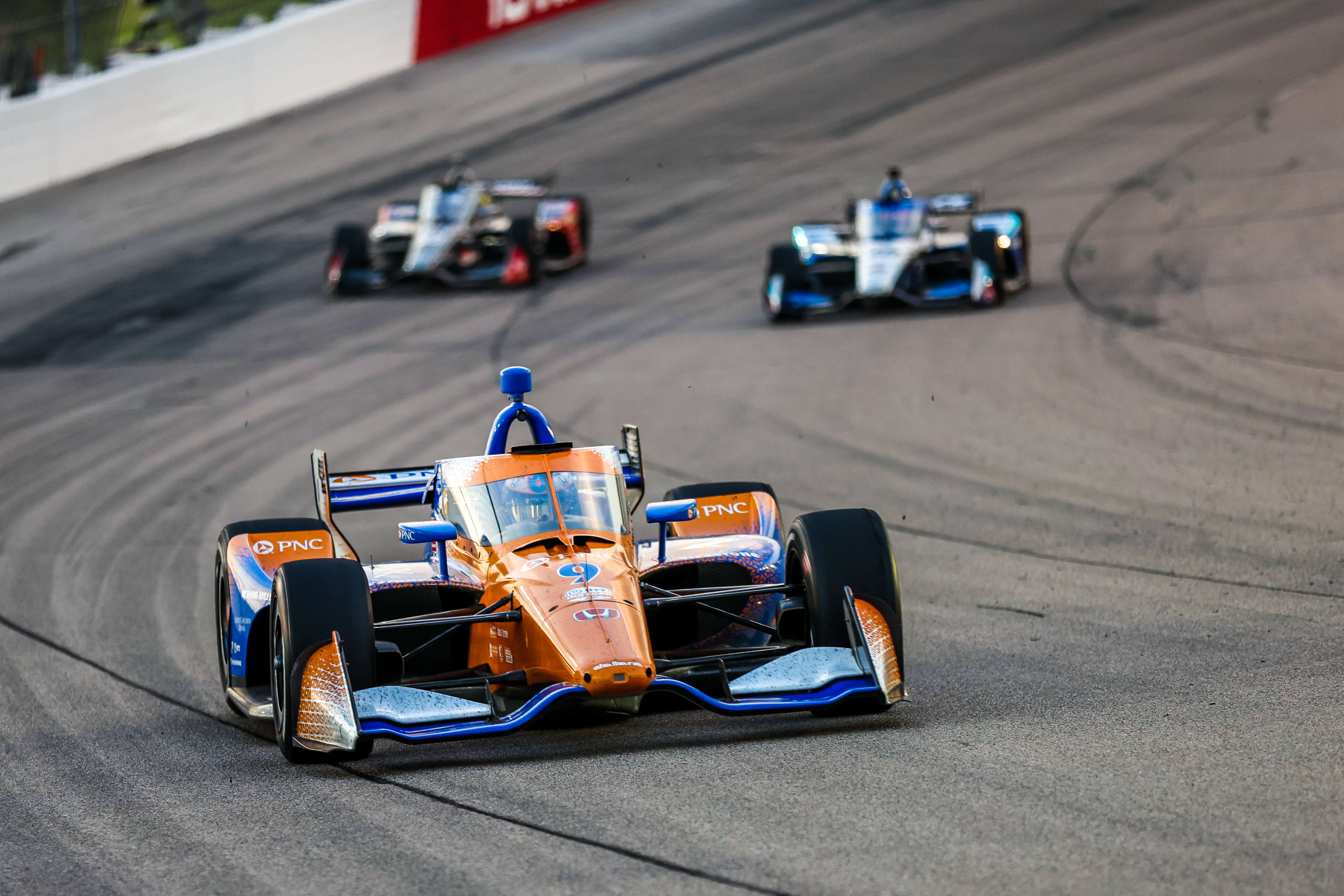
Chip Ganassi Racing hasn’t won the Indianapolis 500 since 2012 with Dario Franchitti, but it heads into this year’s event in fine form and with Scott Dixon looking to net his second Indy 500 win.
Not only did Ganassi win the Texas season-opener – another fast oval even if it’s not quite representative of Indy – it won the first four races of the season and its off-season work spent focusing on ovals has worked.
All of its drivers, Dixon, Road America winner Felix Rosenqvist and the new ‘Mr Consistent’ Marcus Ericsson appear confident in their chances.
However, Penske’s Josef Newgarden has been just as rapid as Ganassi standout Dixon and only hampered by multiple slices of bad luck when it comes to strategy, and the resurgent Penske team swept the Iowa double-header with 2019 Indy 500 polesitter and race winner Pagenaud and Newgarden.
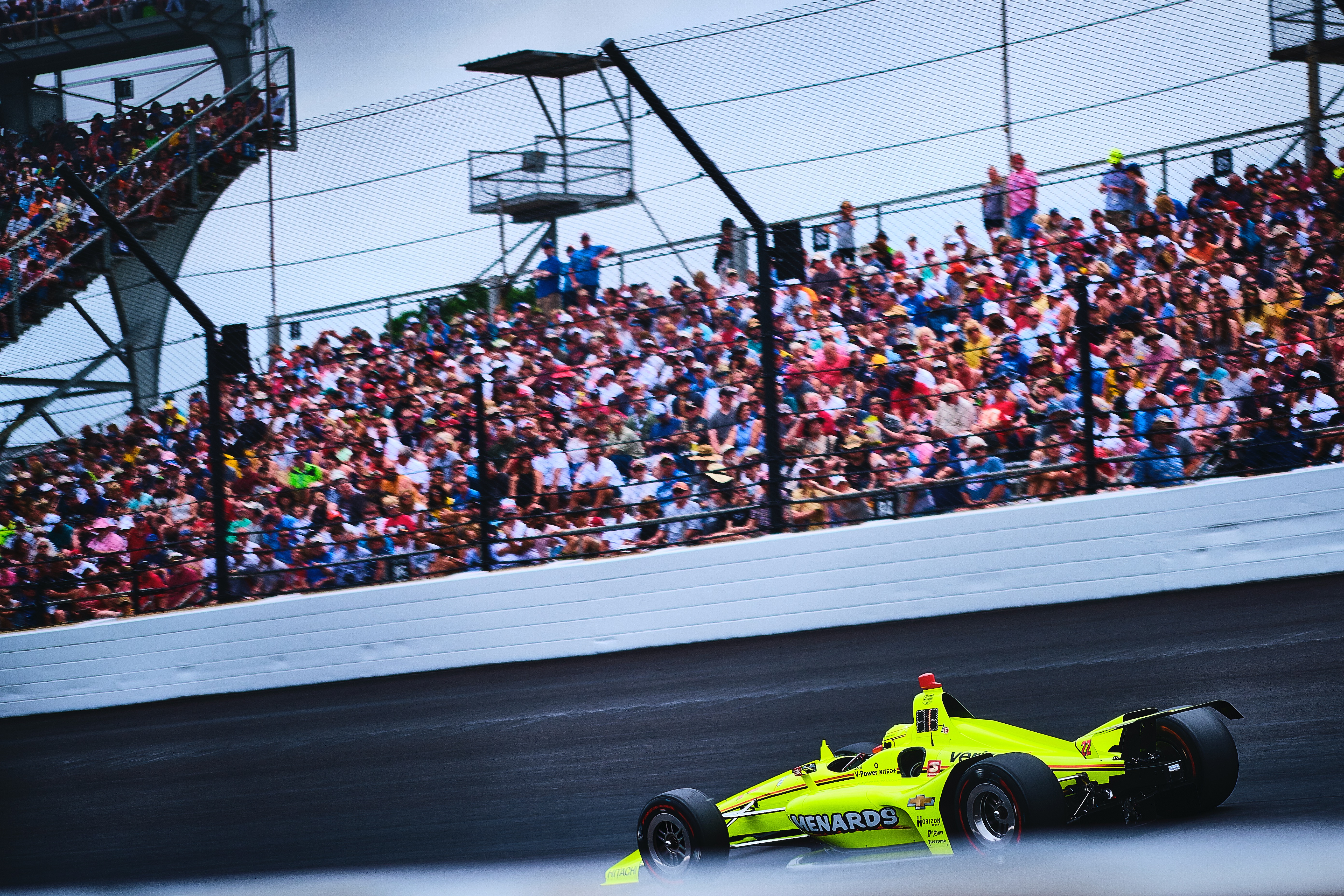
The battle between Chevrolet and Honda’s main protagonists is set to be spectacular if the start to the season is anything to go by, and practice should give us the first indication of if either has drawn ahead in Indy spec.
Andretti Autosport should also be in the mix but its form has been hit and miss in 2020. It has suffered from reliability issues but its leading drivers Alexander Rossi and Ryan Hunter-Reay have also both made mistakes. Colton Herta has been its form-man but lacks experience at Indy, where last year he qualified well but retired very early.
If the aeroscreen doesn’t throw forward a new challenger, you can expect the work to be done this week by Penske, Ganassi and Andretti to be vital.
Well prepared rookies
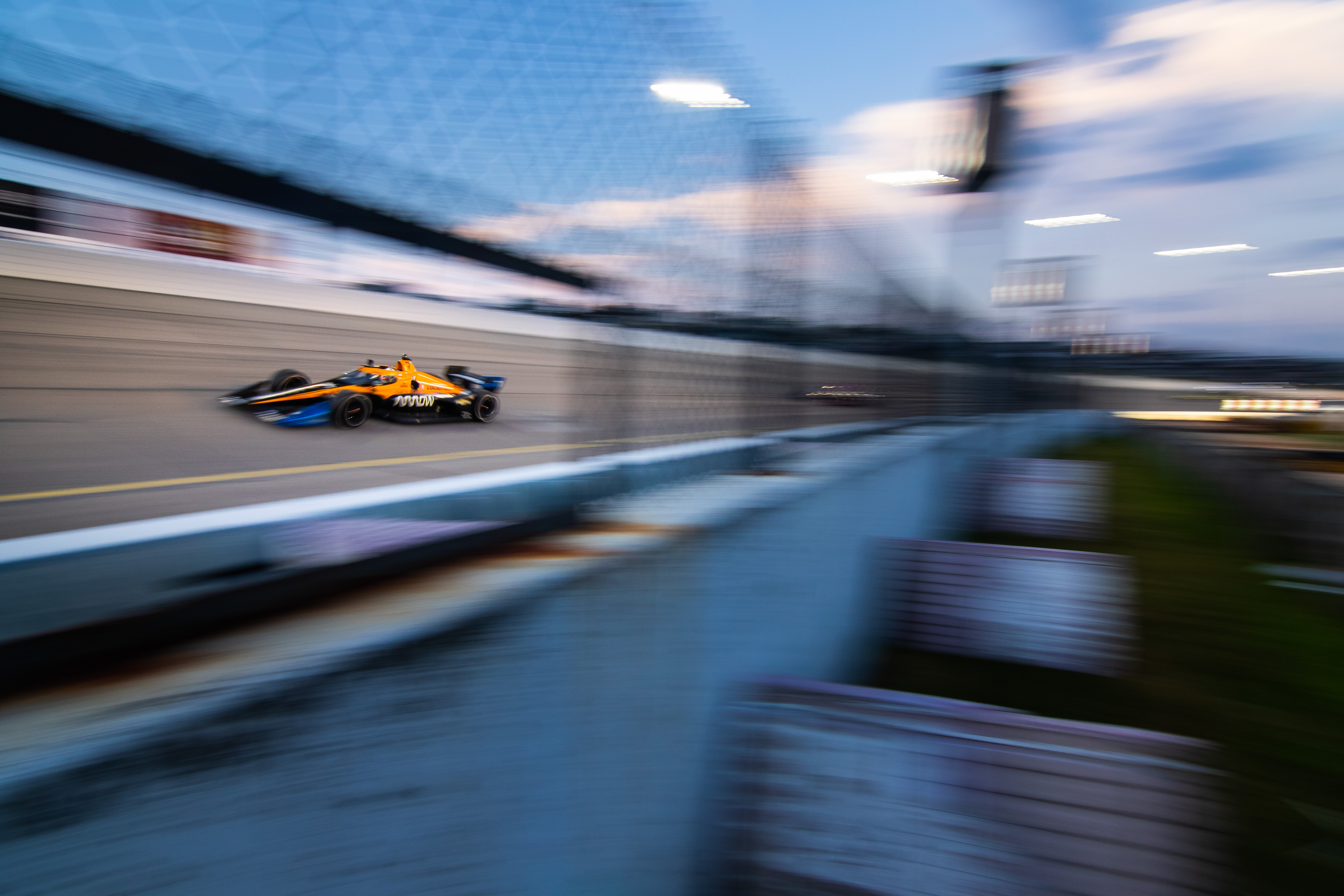
For the first time in 12 years, the Indianapolis 500 rookies have had three oval races under their belts ahead of the season’s biggest event.
With Texas opening the season, and a double-header at Iowa last month, the rookies this year should be as well prepared as ever in the basics of oval racing.
In all three of those oval events one of the full-time IndyCar rookies finished in the top 10, with Askew and Alex Palou providing the standout results.
Askew, Rinus VeeKay and Dalton Kellett all competed in last year’s Indy Lights race preceding the Indy 500, while Palou comes in new to ovals but having impressed with his pace and approach so far.
Askew and VeeKay are definitely in the strongest position of the the lot to challenge, Veekay driving for Ed Carpenter – who has three poles and a runner-up finish in 2018 to his name. Askew is boosted by a strong pair of team-mates in O’Ward and Alonso, with the help of a strong supporting cast. Askew finished eighth at Texas, then third and sixth in the Iowa races.
Weather
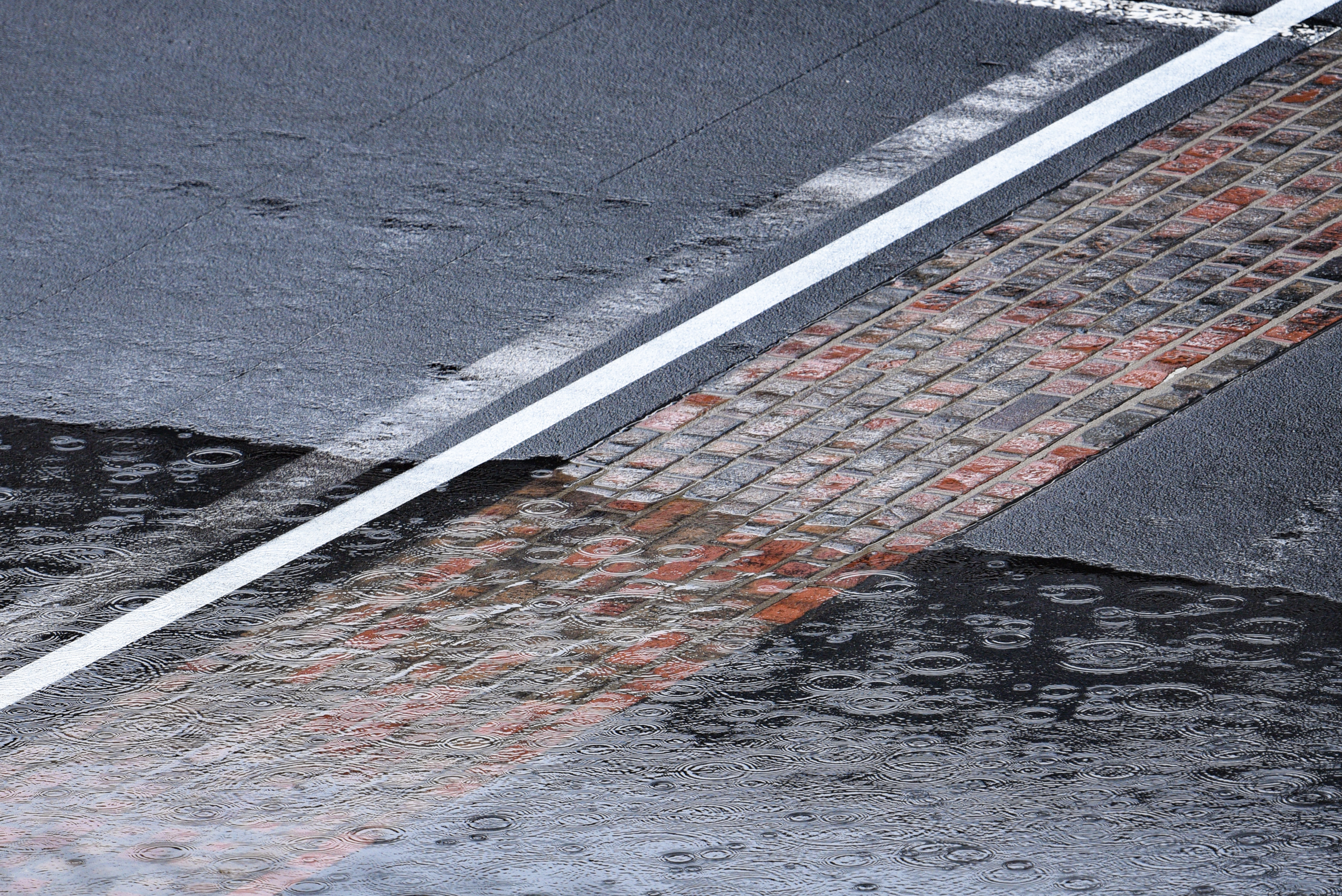
There’s already one practice day fewer than normal for the 104th Indy 500, and moving the event back into August for the first time from its May date may have created another issue: thunderstorms.
The 10-day forecast states a small risk of thunderstorms on Wednesday and Thursday, while making them likely on Friday-Sunday. The weekend includes qualifying while Friday provides the first chance for teams to run on full boost ready for their pole bids.
Any interruption in practice will be particularly disruptive given the reduced running and the need to adapt to the aeroscreen.
With qualifying things are slightly more flexible – IndyCar has a provision in its rules that would allow moving qualifying to the following day, although the ongoing coronavirus pandemic may lead to IndyCar producing a different solution.
What to expect on each day
(all times ET)
Wednesday August 12
A slightly unusual set-up, ‘veterans’ run 1100hrs-1300hrs and then a rookie session featuring the rookie orientation programme runs 1300hrs-1500hrs. A general practice session then follows, 1500hrs-1730hrs.
Thursday August 13
This is the first full day of practice, 1100hrs-1730hrs
Fast Friday August 14
Another session 1100hrs-1730hrs, but in this one the field is given full boost, so this will likely be the first representative running for what we can expect in qualifying. At 1815hrs the draw for the running order in qualifying will be made.
Saturday August 15
Practice is 0830hrs-0930hrs. Then qualifying begins at 1100hrs and runs all the way until 1650hrs. Drivers who slot into 10th-33rd will start the Indy 500 in these positions. The rest go into the ‘Fast Nine’ pole shootout on Sunday.
Sunday August 16
The order of this day could change if a 34th entry is fielded last minute, but that is not expected. So this will be an Indy 500 without ‘bumping’. Instead there will be a ‘Fast Nine’ practice at 1100hrs for 30 minutes. ‘Fast Nine’ qualifying takes place 1315hrs-1415hrs, and then all of the cars that have qualified are welcome to practice between 1530hrs-1800hrs.
‘Carb Day’, Friday August 21
This is the last practice before the 500. In the past it was when the competitors would – you guessed it – fettle their carburettors, but that hasn’t been the case since 1964. Now it’s simply the traditional last chance for race prep, running from 1100hrs-1300hrs. In recent years the Indy Lights race and the pitstop challenge have happened on carb day but they have both been cancelled – along with the rest of the Lights season.
Sunday August 23
Cars are wheeled out into the pitlane around 1245hrs, and the command to start engines is set for 1423hrs. The race gets underway at 1430hrs.
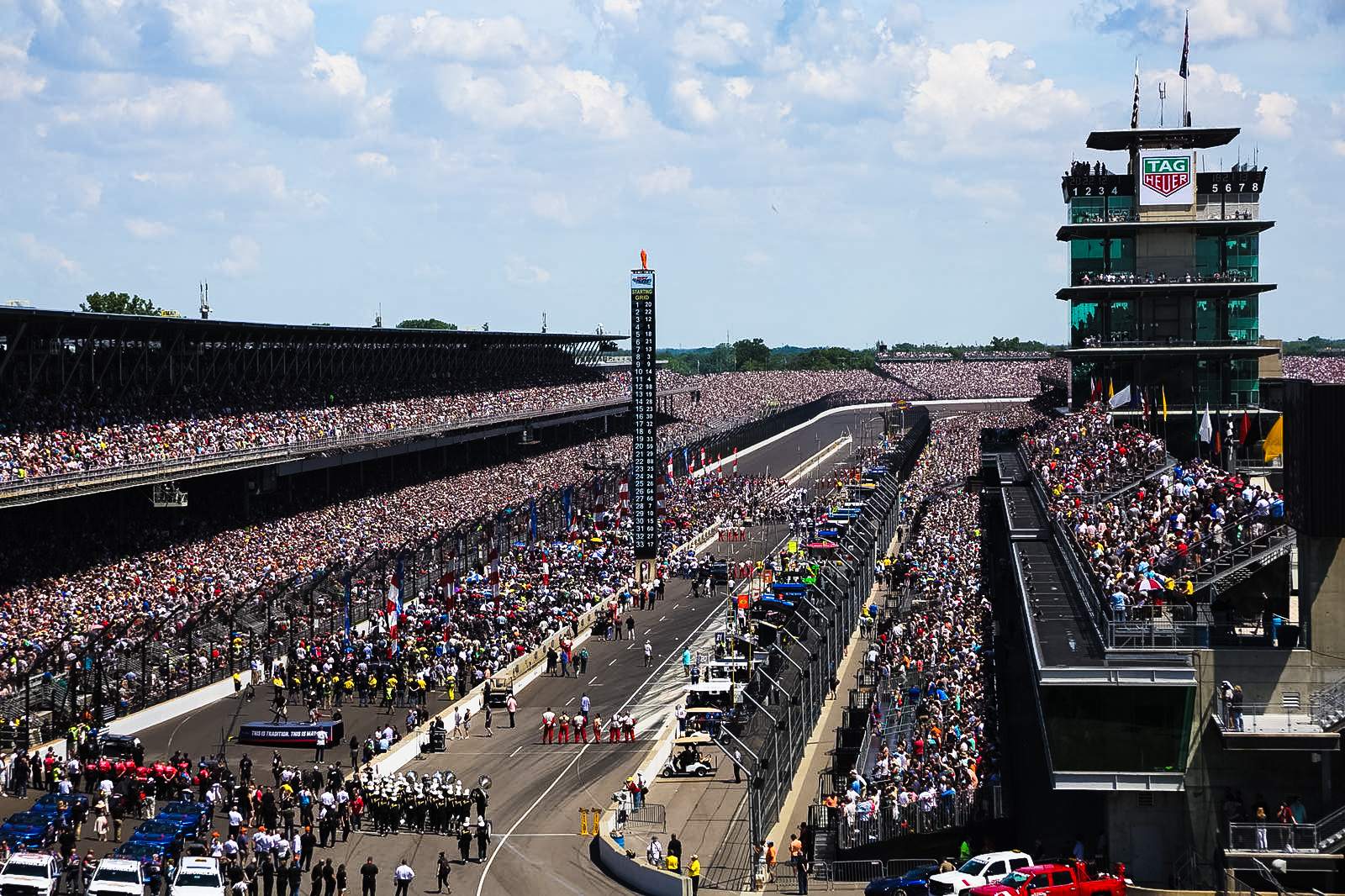
Entry list
AJ Foyt Racing (Chevy)
Tony Kanaan, Dalton Kellett, Charlie Kimball
Andretti Autosport (Honda)
Marco Andretti, Colton Herta, James Hinchcliffe, Ryan Hunter-Reay, Alexander Rossi, Zach Veach
Arrow McLaren SP (Chevy)
Fernando Alonso, Oliver Askew, Pato O’Ward
Carlin Racing (Chevy)
Max Chilton
Citrone Buhl Autosport (Honda)
Spencer Pigot
Chip Ganassi Racing (Honda)
Scott Dixon, Marcus Ericsson, Felix Rosenqvist
Dale Coyne Racing (Honda)
James Davison, Santino Ferrucci, Alex Palou
DragonSpeed (Chevy)
Ben Hanley
Dreyer & Reinbold Racing (Chevy)
JR Hildebrand, Sage Karam
Ed Carpenter Racing (Chevy)
Ed Carpenter, Conor Daly, Rinus VeeKay
Meyer Shank Racing (Honda)
Jack Harvey
Rahal Letterman Lanigan Racing (Honda)
Graham Rahal, Takuma Sato
Team Penske (Chevy)
Helio Castroneves, Josef Newgarden, Simon Pagenaud, Will Power

